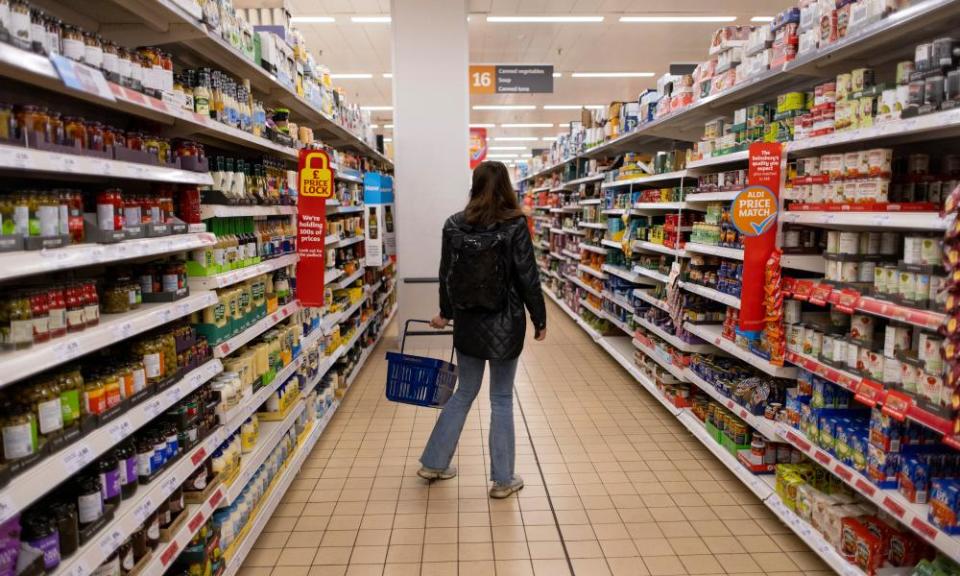UK interest rates forecast to rise less sharply after inflation falls to 7.9%

UK inflation fell further than expected in June to 7.9% amid a sharp fall in petrol prices, easing forecasts for how aggressively the Bank of England will need to raise interest rates over the coming year.
The Office for National Statistics said the annual inflation rate as measured by the consumer prices index resumed a downward path after unexpectedly sticking at 8.7% in May. The drop exceeded City forecasts for a decline to 8.2%.
Financial markets responded to the figures by betting that the Bank of England would no longer drive interest rates above 6% early next year.
Related: Inflation calculator: find out how much UK household price rises affect you
Raising further hopes of relief for mortgage holders, markets also predicted that the central bank would introduce a more modest quarter-point rise in borrowing costs at its next policymaking meeting in August instead of a tougher half-point increase from the current level of 5%.
Coming in below expectations for the first time in several months after sticking at stubbornly high levels, the reading was the lowest rate since March 2022 but still well above the Bank’s official 2% target. However, UK inflation still remains the highest among the G7 group of advanced economies.
The latest snapshot showed the fall in the inflation rate was driven by the price of petrol and diesel dropping by more than a fifth compared with the same month a year ago, when prices were close to a record high.
Raising hopes for an easing of pressure on households, the annual rate of increase in food and drink prices slowed in June to 17.3%, compared with 18.3% in May, helping to bring down the headline inflation rate.
Core inflation, which strips out food and energy, and is closely watched by the Bank of England, also fell back to 6.9% after reaching a 30-year high of 7.1% in May.
The Bank has already raised interest rates 13 times in succession to 5%, up from a record low of 0.1% in December 2021, adding to the financial pressure on households amid the cost of living crisis.
Reflecting the shift in likelihood towards fewer interest rate increases, on Wednesday morning the pound fell by about a cent against the US dollar on the international currency markets, dropping to $1.29.
The chancellor, Jeremy Hunt, said: “Inflation is falling and stands at its lowest level since last March; but we aren’t complacent and know that high prices are still a huge worry for families and businesses.
“The best and only way we can ease this pressure and get our economy growing again is by sticking to the plan to halve inflation this year.”
UK inflation remains the highest among the G7 group of advanced economies, and financial markets widely expect the Bank to drive up borrowing costs further at its next policymaking meeting in August.
“Inflation has been persistently high and remains higher than our international peers. This is becoming a hallmark of Tory economic failure,” said Rachel Reeves, the shadow chancellor.
“Today’s numbers confirm what families across the country already know – that prices are still going up at staggering rates and that they’re bearing the brunt of those costs.”

 Yahoo Finance
Yahoo Finance 